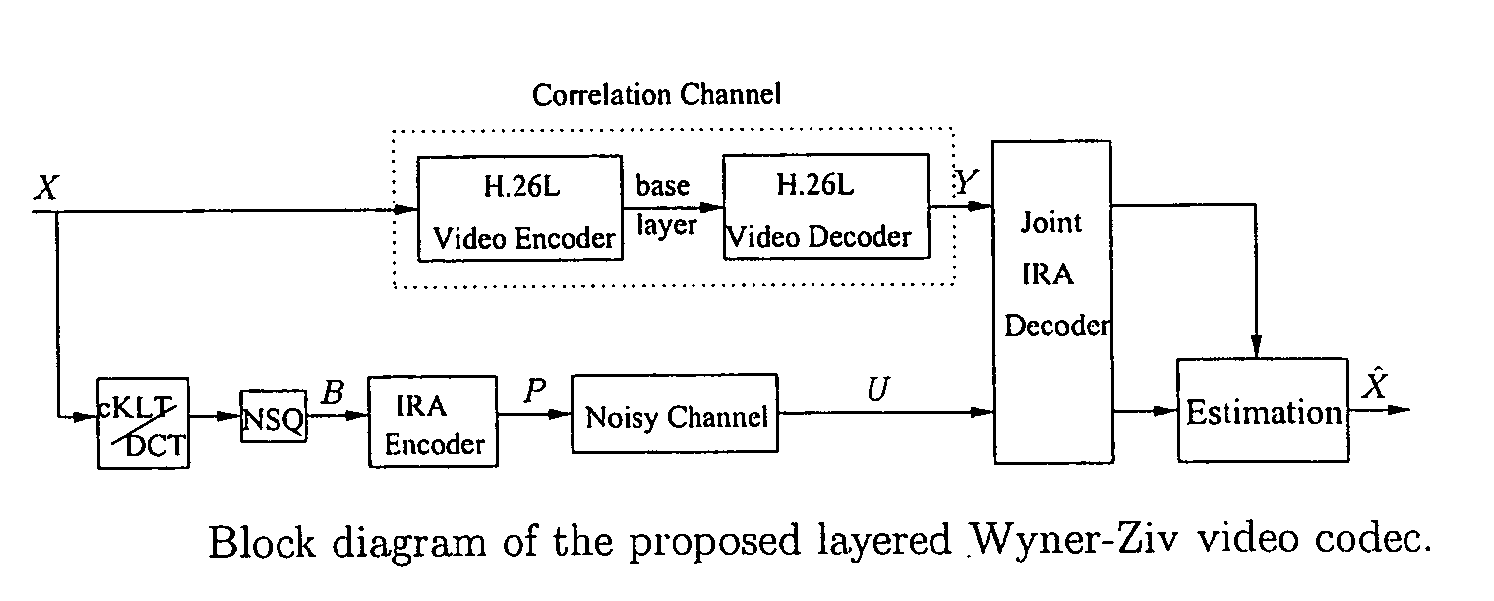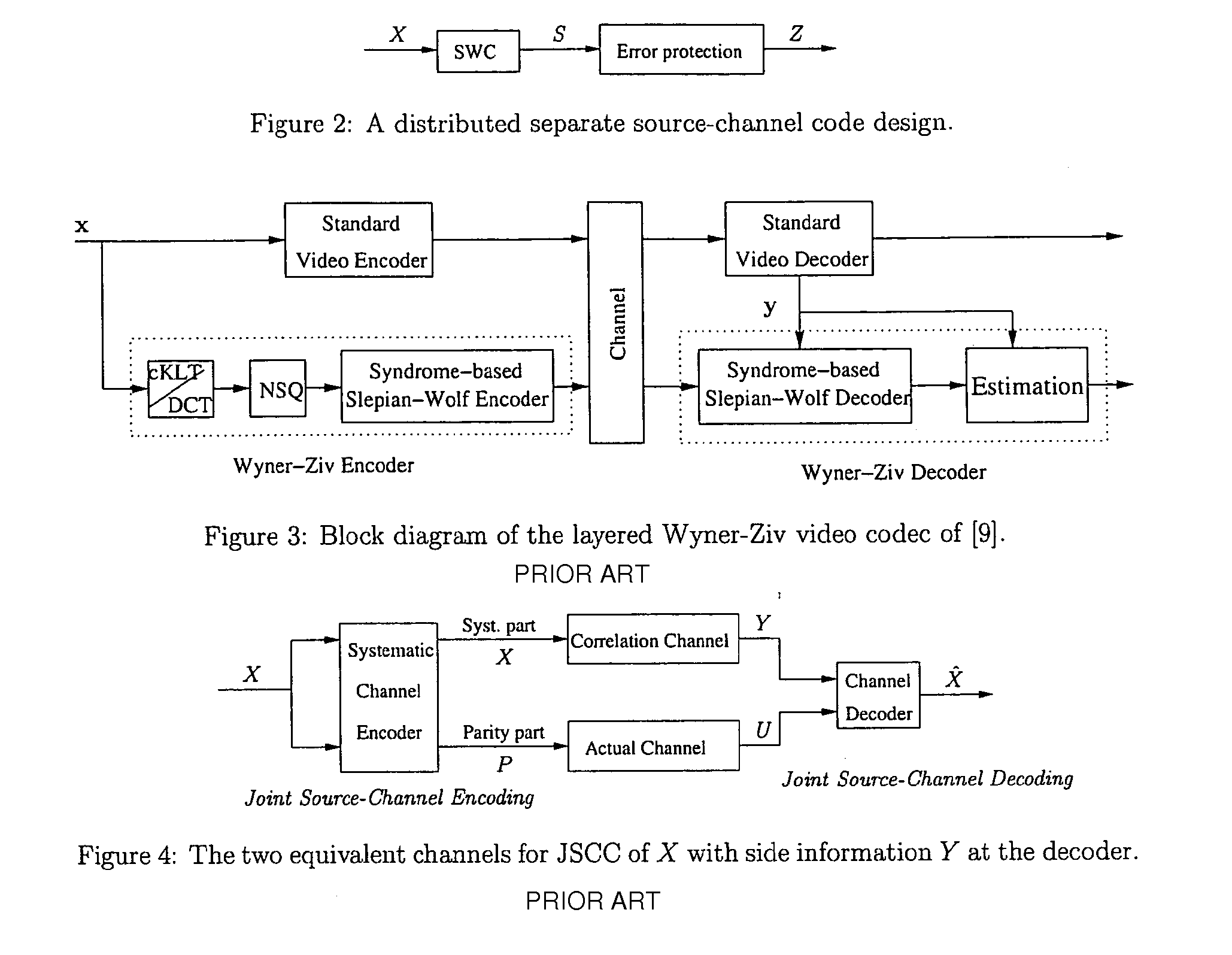Layered Wyner-Ziv video coding for transmission over unreliable channels
a video coding and channel error technology, applied in the field of video transmission, can solve the problems of channel error, packet loss and channel error sensitive standard video coders, and need additional error protection, etc., and achieve the effect of reducing the rate, error protection, and suitable for wireless communication
- Summary
- Abstract
- Description
- Claims
- Application Information
AI Technical Summary
Benefits of technology
Problems solved by technology
Method used
Image
Examples
Embodiment Construction
[0021]Please note that a list of references is included at the end of this detailed description. The notation “[n]” is to be interpreted as a reference to the nth reference in the list of references.
[0022]In one set of embodiments, a method for encoding video data to achieve both source coding and error protection may involve the following actions, as illustrated in FIG. 1A.
[0023]At 100, energy-concentrating transform operations may be performed on video data to obtain transformed data. The video data may include NF video frames, where NF is a positive integer. The energy-concentrating transform operations serve to concentrate the energy of each block (of each frame) in a few of the transform coefficients C(I,J), where I and J are integers in the range from zero to NL−1, where NL is the side length of the block in terms of pixels. (Various values of NL are contemplated. In one embodiment, NL=4. In another embodiment, NL=8.)
[0024]In one embodiment, the energy-concentrating transform ...
PUM
 Login to View More
Login to View More Abstract
Description
Claims
Application Information
 Login to View More
Login to View More - R&D
- Intellectual Property
- Life Sciences
- Materials
- Tech Scout
- Unparalleled Data Quality
- Higher Quality Content
- 60% Fewer Hallucinations
Browse by: Latest US Patents, China's latest patents, Technical Efficacy Thesaurus, Application Domain, Technology Topic, Popular Technical Reports.
© 2025 PatSnap. All rights reserved.Legal|Privacy policy|Modern Slavery Act Transparency Statement|Sitemap|About US| Contact US: help@patsnap.com



